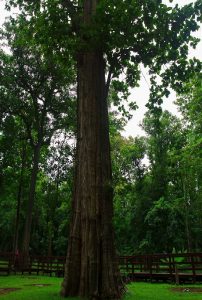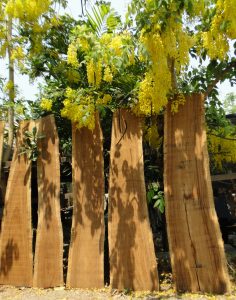OUR WOOD
TEAK WOOD
This outstanding species of tree is native to the tropical plantation of South East Asia, and it can grow to a height of 30-40 m. Teak is a yellowish brown timber with good grains and texture.
Why teak wood? Teak is valuable for both its elegance and its durability. Beyond its magnificence, it also has certain natural properties that other types of wood don’t have.
The most significant characteristic of Teak is its resistance to all kinds of weather.
Additional features of teak are its elasticity and solid fibre, both of which simplify woodworking and the ability of artisans to create products, which you can find at Akha.com.au, that are both beautiful and durable.
Natural oils of teak wood make it suitable for use in exposed locations. These oils assist the timber to be termite, pest and bacteria resistant. Teak is a long-lasting wood, even when not preserved with oil or varnish. Moreover, teak wood holds its shape over years, even if left outdoors. These are the reasons that, unlike other woods, it is often used as the main material for both indoor and outdoor furniture.
Through much of recorded history Teak wood has been relied upon and trusted for its uncommon strength. This wood is highly prized by lovers and collectors of furniture the world over. Because of its rareness and the limited supply of teak in the world, teak is increasingly being sought after and its price increasing. In fact, as the supply diminishes, Teak products that have already been produced, often considered as collectibles.
Want to know how to keep it clean and gorgeous?
Oil, varnish, and water sealers aren’t recommended or necessary on teak wood furniture. Varnish chips and flakes on the wood, requiring sanding to remove.
The natural oils in the wood seal out water.
Oily foods, ketchup, and some drinks can stain teak.
When left outdoors teak wood will naturally weather to a silver grey colour. Your furniture can be restored to its original honey colour by cleaning with mild soapy water and a soft bristle scrubbing brush. But should you wish your furniture to retain the rich honey colour that it had when first brought, then all you need do is apply a little teak oil 2 to 3 times each year and this will restore the furniture’s natural shine.

Mangifera indica (Mango Tree)
The mango tree was discovered in Southeast Asia more than 2000 years ago and has become a symbol of good fortune and well-being. In time, mango trees grow to become very large (20-30 m high and 1-1.5 m wide). This wood is sustainable. As the tree approaches this size, it becomes more difficult to harvest and more importantly, it stops to bear fruit. On mango wood plantations, before the trees reach this size, they are replaced with young mango trees. The harvested wood is an additional source of income for the mango farmers.
Mango wood displays colour properties unlike most other woods, it has green, brown and yellow hues. Mango wood vases and bowls show the best colouring and texture as the different carving and cut strokes reveal more diverse ranges of grain.
The mango wood is dried in a two-step method which enriches the wood’s stability and durability. Moreover, all mango wood items are treated to avoid any fungal attack of the timber. As a result of this practice, we can preserve its diverse tones and shades, allowing each product to parade colour variations unlike any other wood, from a multitude of browns and greens, to shades of yellow. After this, skilled craftsmen begin hand carving and working the wood, turning the raw material into fine, unique hard wood décor and art.

SAMANEA SAMAN (rain tree, monkey pod, saman)
Originally native to South America, Rain Tree wood has spread throughout the tropics for over a century. In Thailand, Rain tree is mainly grown in the Northern provinces along the neighbouring borders providing a plentiful source of larger wood for the carving industry. Thailand has the Royal Forestry Department encouraging and enforcing sustainable wood growth and harvesting practices.
It is a fast growing tree and develops into a thick mature trunk with an interlocking and crisscrossing grain. Typically reaches 15–25 m tall with a broad crown typically 30 m in diameter.
The timber is valued for carvings, furniture, panelling, veneers, and is also used for turnery, posts, framing in boat building, plywood, boxes, and crates. It is generally considered a durable wood and resistant to attack by drywood termites. Harvested correctly the trunk is left in place and larger limbs are cut for use initially. Eventually the trunk is cut as it passes its best producing cycle.


